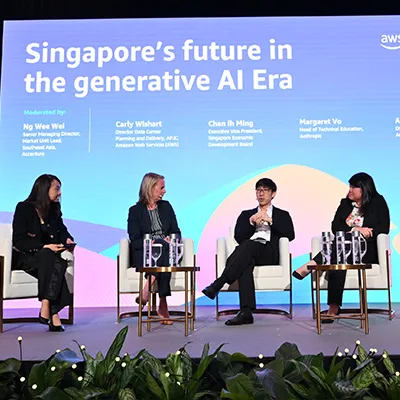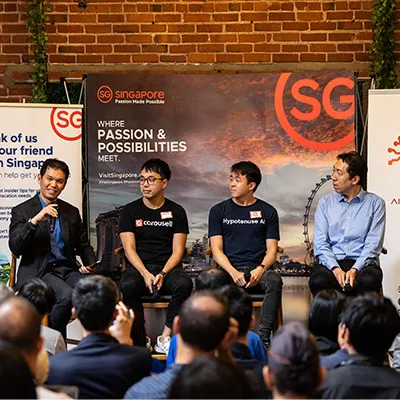The opportunity in Southeast Asia (SEA) has been much talked about. However, beyond the headlines and statistics, there is still much about SEA that is not visible from the outside. Hidden in plain sight are people, places and platforms that are pushing boundaries and transforming SEA from the inside. At the Singapore Week of Innovation & Technology 2020, experts from Deloitte and EDB provided a refreshing take on SEA. Click on the panels below to flip them over and discover lesser-known facts that make Southeast Asia the vibrant new frontier for technology companies.
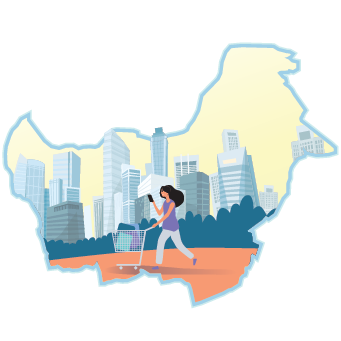
SEA is the 5th largest economy in the world and the world’s 3rd largest labour force

COVID-19 has accelerated the rate of digitalisation. According to a report by Bain & Company, Google and Temasek, 2020 saw SEA gain 40 million new consumers who have accessed the internet for the first time. This digital surge is expected to be sustained and the internet sector is expected to grow to over US$300B GMV by 2025. Not only would sectors like ecommerce benefit, but nascent sectors such as HealthTech and EdTech will see growth as they are propelled by changing habits.
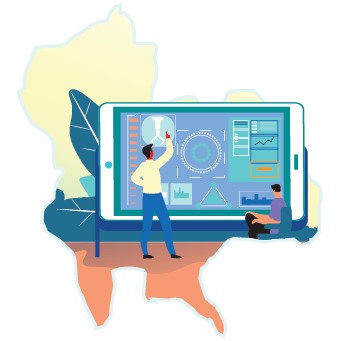
"Rather than large corporations in the West trying to infuse their ways of doing things in Asia, you are going to see a flip. Asia is where things are going to be invented, where things are going to be scaled." – Cindy Hook, CEO, Deloitte Asia Pacific

Tech giants and startups alike have set up innovation teams in Singapore to be closer to the mass of SEA consumers coming online and develop products dedicated for them. Since 2016, Singapore has been Google’s Centre of Innovation that powers the company’s efforts to serve the “next billion users” in SEA. In 2020, Zoom announced plans to set up an R&D centre in Singapore which will house hundreds of staff in key engineering roles.
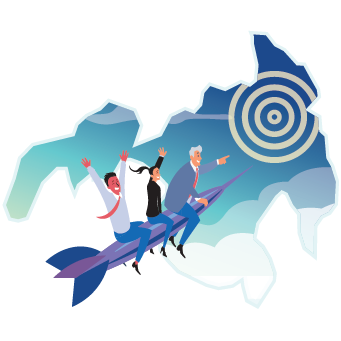
"What took Alibaba (China) 10 years, I think will take this region 5 to 6 as there is already a well-trodden path." – Kai Fong Chng, Managing Director, EDB

With technology permeating all aspects of life, SEA consumers are generating massive amounts of digital footprints. As was the case in China's internet economy, which was transformed by Tencent's WeChat superapp, the treasure trove of user insights has and will continue to inspire new technological and business model innovations. Opportunities for companies, big or small, are aplenty.

"This region has less infrastructure bias than the others (regions). This allows it to leapfrog in a way that the others haven't." – Duleesha Kulasooriya, Executive Director, Deloitte Centre for the Edge, APAC

For many consumers in SEA, their mobile phones are their primary, and often only, device through which they access the internet. This enables SEA to leapfrog to frontier technologies. For instance, SEA consumers are skipping credit cards for mobile e-wallets. 70% of SEA consumers are underbanked or unbanked today. With rapid smartphone adoption, digital-first finance services are giving traditional financial institutions a run for their money. Mobile payments in SEA is estimated to grow 700% between 2019 and 2025.
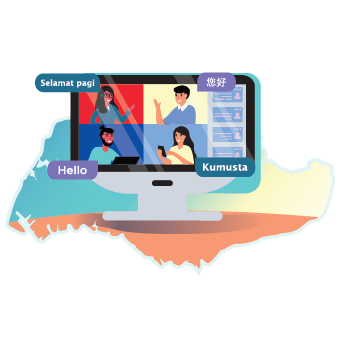
The region is made up of 10 member ASEAN countries, 25,000 islands and archipelagos that are home to a multi-religious, multilingual population

Despite differences between SEA markets, SEA consumers share many similar needs. For example, mom-and-pop retail is still the primary channel that provides everyday consumer goods to the people in multiple SEA countries. The informal economy in Indonesia is estimated to be 22% and 43% in Thailand. Telemedicine has also been on the rise in the region as consumers spread across the region’s many islands access doctors through health tech platforms. This similarity provides scale for technology companies that provide solutions to meet these needs.
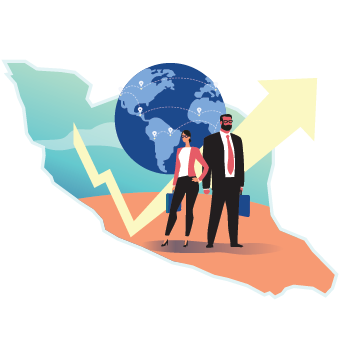
"It's exciting not just because of the products they (SEA companies) are inventing, it is the processes that they are inventing. Our companies are interested in working with them to make them go global." - Amb. Michael Michalak, Regional Managing Director, US-ASEAN Business Council

According to Amb Michael Michalak, while companies in the US-ASEAN Business Council have a spread of operations in SEA, Singapore is the one place which every company has a presence in. This is unsurprising given Singapore's investments to make the country a Smart Nation and global tech node. The country has also enhanced digital connectivity with countries like New Zealand, Chile and Australia, to enable end-to-end digital trade, enable data flows across borders and collaborate on cutting edge projects.

Read the full report by Deloitte and EDB for case studies of businesses in various sectors that thrived in SEA’s unique landscape
Check it out
SEA is the 5th largest economy in the world and the world’s 3rd largest labour force

COVID-19 has accelerated the rate of digitalisation. According to a report by Bain & Company, Google and Temasek, 2020 saw SEA gain 40 million new consumers who have accessed the internet for the first time. This digital surge is expected to be sustained and the internet sector is expected to grow to over US$300B GMV by 2025. Not only would sectors like ecommerce benefit, but nascent sectors such as HealthTech and EdTech will see growth as they are propelled by changing habits.

"Rather than large corporations in the West trying to infuse their ways of doing things in Asia, you are going to see a flip. Asia is where things are going to be invented, where things are going to be scaled." – Cindy Hook, CEO, Deloitte Asia Pacific

Tech giants and startups alike have set up innovation teams in Singapore to be closer to the mass of SEA consumers coming online and develop products dedicated for them. Since 2016, Singapore has been Google’s Centre of Innovation that powers the company’s efforts to serve the “next billion users” in SEA. In 2020, Zoom announced plans to set up an R&D centre in Singapore which will house hundreds of staff in key engineering roles.

"What took Alibaba (China) 10 years, I think will take this region 5 to 6 as there is already a well-trodden path." – Kai Fong Chng, Managing Director, EDB

With technology permeating all aspects of life, SEA consumers are generating massive amounts of digital footprints. As was the case in China's internet economy, which was transformed by Tencent's WeChat superapp, the treasure trove of user insights has and will continue to inspire new technological and business model innovations. Opportunities for companies, big or small, are aplenty.

"This region has less infrastructure bias than the others (regions). This allows it to leapfrog in a way that the others haven't." – Duleesha Kulasooriya, Executive Director, Deloitte Centre for the Edge, APAC

For many consumers in SEA, their mobile phones are their primary, and often only, device through which they access the internet. This enables SEA to leapfrog to frontier technologies. For instance, SEA consumers are skipping credit cards for mobile e-wallets. 70% of SEA consumers are underbanked or unbanked today. With rapid smartphone adoption, digital-first finance services are giving traditional financial institutions a run for their money. Mobile payments in SEA is estimated to grow 700% between 2019 and 2025.

The region is made up of 10 member ASEAN countries, 25,000 islands and archipelagos that are home to a multi-religious, multilingual population

Despite differences between SEA markets, SEA consumers share many similar needs. For example, mom-and-pop retail is still the primary channel that provides everyday consumer goods to the people in multiple SEA countries. The informal economy in Indonesia is estimated to be 22% and 43% in Thailand. Telemedicine has also been on the rise in the region as consumers spread across the region’s many islands access doctors through health tech platforms. This similarity provides scale for technology companies that provide solutions to meet these needs.

"It's exciting not just because of the products they (SEA companies) are inventing, it is the processes that they are inventing. Our companies are interested in working with them to make them go global." - Amb. Michael Michalak, Regional Managing Director, US-ASEAN Business Council

According to Amb Michael Michalak, while companies in the US-ASEAN Business Council have a spread of operations in SEA, Singapore is the one place which every company has a presence in. This is unsurprising given Singapore's investments to make the country a Smart Nation and global tech node. The country has also enhanced digital connectivity with countries like New Zealand, Chile and Australia, to enable end-to-end digital trade, enable data flows across borders and collaborate on cutting edge projects.

Read the full report by Deloitte and EDB for case studies of businesses in various sectors that thrived in SEA’s unique landscape
Check it out

